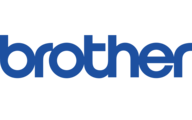Canon fax l 250 Bedienungsanleitung
Lesen Sie kostenlos die 📖 deutsche Bedienungsanleitung für Canon fax l 250 (282 Seiten) in der Kategorie Fax. Dieser Bedienungsanleitung war für 7 Personen hilfreich und wurde von 2 Benutzern mit durchschnittlich 4.5 Sternen bewertet
Seite 1/282

FAX-L250
User’s Guide

Although this equipment can use either loop disconnect or DTMF signalling, only the performance
of the DTMF signalling is subject to regulatory requirements for correct operation. It is therefore
strongly recommended that the equipment is set to use DTMF signalling for access to public or
private emergency services. DTMF signalling also provides faster call set up.
This CE Marking shows compliance of this equipment with Directive 73/23/EEC and Directive
89/336/EEC (as amended by Directive 92/31/EEC), both as amended by Directive 93/68/EEC.
Canon Inc. /Canon Europa N.V.
Copyright
Copyright r1997 by Canon, Inc. All rights reserved. No part of this publication may be reproduced,
transmitted, transcribed, stored in a retrieval system, or translated into any language or computer
language in any form or by any means, electronic, mechanical, magnetic, optical, chemical, manual, or
otherwise, without the prior written permission of Canon, Inc.
ii

Trademarks
Canontis a registered trademark, and UHQ
TM
is a trademark of Canon Inc.
Other brand and product names may be trademarks or registered trademarks of their respective
companies.
As an Energy Star Partner, Canon has determined that the FAX-L250 meets the
Energy Star guidelines for energy efficiency.
EPA POLLUTION PREVENTER
iii
Produktspezifikationen
| Marke: | Canon |
| Kategorie: | Fax |
| Modell: | fax l 250 |
Brauchst du Hilfe?
Wenn Sie Hilfe mit Canon fax l 250 benötigen, stellen Sie unten eine Frage und andere Benutzer werden Ihnen antworten
Bedienungsanleitung Fax Canon

6 Juli 2024

6 Juli 2024

6 Juli 2024

4 Juli 2024

2 Juli 2024

2 Juli 2024

1 Juli 2024

1 Juli 2024

30 Juni 2024

29 Juni 2024
Bedienungsanleitung Fax
- Fax Samsung
- Fax HP
- Fax Philips
- Fax Panasonic
- Fax Telekom
- Fax Daewoo
- Fax Topcom
- Fax Toshiba
- Fax Brother
- Fax Possio
- Fax Sagem
- Fax Ricoh
- Fax Belgacom
- Fax Xerox
- Fax Nashuatec
Neueste Bedienungsanleitung für -Kategorien-

27 August 2024

27 August 2024

27 August 2024

27 August 2024

27 August 2024

27 August 2024

27 August 2024

27 August 2024

27 August 2024

27 August 2024